Biggest Problems in Master Data Management
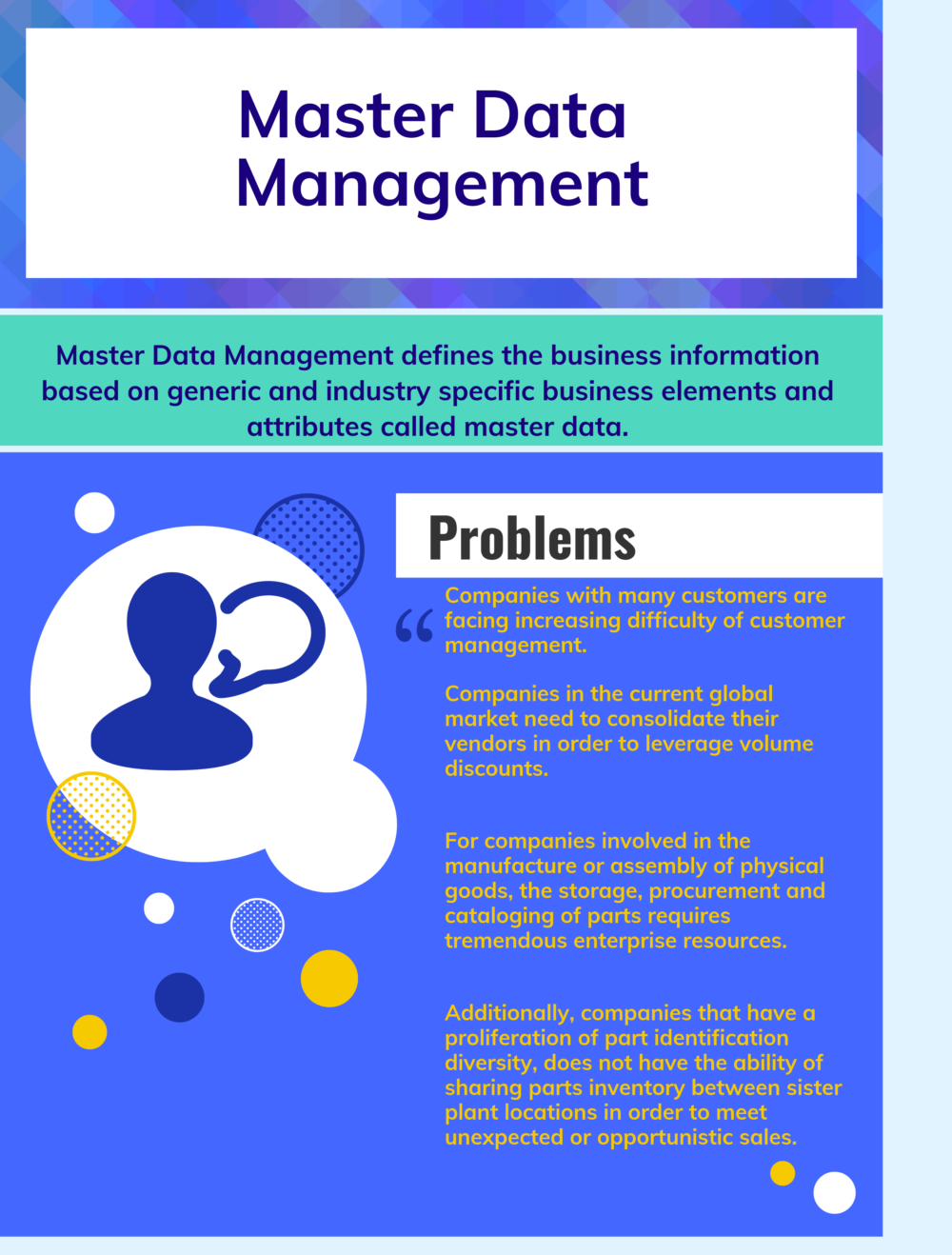
Master Data Management is a business system solution for managing business information integrity across the business network, in a heterogeneous IT environment. Master Data Management defines the business information based on generic and industry specific business elements and attributes called master data. Master data covers business partner information like vendor, customer masters, products, bill of materials, and other assets.
What are the problems in Master Data Management?
Companies with many customers are facing increasing difficulty of customer management. However, customers want fast, efficient service. But when customer information is loosely dispersed across a wide range of applications, this is a tough demand to meet.
Without consolidating this information, customer management processes are forced to rely on locally available information which is often incomplete or even obsolete. This can significantly detract from a company’s business performance both in terms of cost efficiency and customer loyalty.
Companies in the current global market need to consolidate their vendors in order to leverage volume discounts. But when the vendor information is in many business systems that are not harmonized, it becomes impossible to determine from a global, or even regional, perspective what the buying power is and how it can be leveraged for maximum cost savings.
You may like to read: Enterprise Grade Master Data Management Strategy
For companies involved in the manufacture or assembly of physical goods, the storage, procurement and cataloging of parts requires tremendous enterprise resources. Redundant master data within or between plant locations can present a distorted picture of parts inventory. This can lead to incorrect supply chain decisions where inventories can be over purchased or over stocked; thus causing vexing supply chain gaps.
Additionally, companies that have a proliferation of part identification diversity, does not have the ability of sharing parts inventory between sister plant locations in order to meet unexpected or opportunistic sales.
Without effectively and efficiently managing master data, companies will continue to generate this kind of redundancies and low data quality that prohibit the smooth execution of collaborative logistics processes.
As companies manage their bottom lines, inventories must be reduced, prices matched, and procurement processes streamlined. Cross-group reporting forms the basis for the business decisions that guide these initiatives. But when it is based on inconsistent, ill-managed data, cross group reporting can lead to the kind of faulty executive decision-making that adversely impacts business competitiveness.
Traditional IT solutions have attempted to bridge these heterogeneous systems by building point-to-point interfaces. However, this has led to complex and expensive IT solutions that still does not provide for harmonized data and reporting. The data is still trapped and siloed, and hinders cross-system collaboration.
You may like to read: Top Master Data Management Software
Data, in many cases, must still be maintained independently in each of the independent systems. Having multiple master data entry for the same item has the potential for inconsistent master data in each of the systems. There is typically no recognition of duplicates, or even the means to identify duplicates, between systems or within systems thus resulting in unaligned master data knowledge and usage. This has led to a patchwork of processes with high alignment efforts resulting in cumbersome system-wide analytics and data flow that is hindered by technical restrictions.
- High Integration & Maintenance costs
- The sheer data volume
- Inaccuracies and redundancies
- The effort to provide all the required
- information per master data
- Insufficient Analytics
- Unreliable reports
- Duplicate data
- Costly consolidated reports
- Poor master data knowledge
- Bad information for sourcing processes
You may like to read: How to Select the Best Master Data Management Software for Your Business
What are the Cost Drivers in Master Data Management?
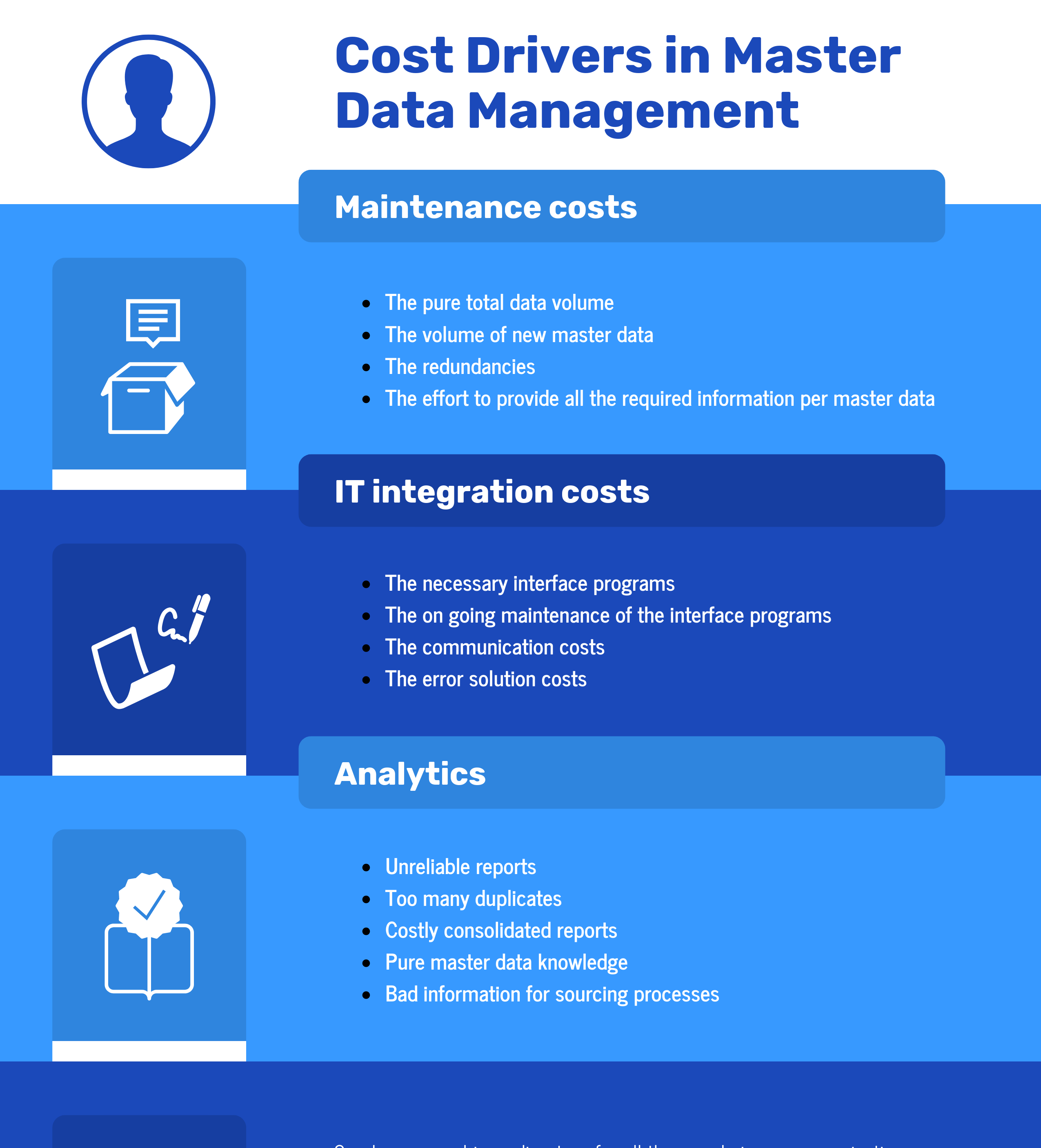
What are the Cost Drivers in Master Data Management
What is Master Data Management Solution?
Master Data Management enables the sharing of harmonized master data, formerly trapped as independent master data in multiple systems, and ensures cross system data consistency regardless of physical system location.
It facilitates the alignment of master data by providing services that recognize identical master data objects, and subsequently keeping them consistent across the IT environment.
Additionally, Master Data Management enables the federation of business processes, by providing consistent distribution mechanisms of master data objects into other systems, within the company, and across company boundaries.
Master Data Management helps companies achieve this challenging goal in a way that leverages the existing system environment and maximizes overall IT investment. Now there is a way to eliminate the data redundancies and inconsistencies that diminish business performance, while truly unifying the extended enterprise at the critical level of business processes.
You may like to read: Best Practices for Master Data Management
What is Master Data Management Scope and Application?
Successful Master Data Management in a heterogeneous IT environment involves more than the integration of systems. Master data must be accounted for and supported in its overall cross-system context throughout each business process.
At the same time, while companies may readily see the business advantages to properly manage master data, they cannot afford the downtime required to implement large enterprise wide software packages. In addition, in this time of IT budget consciousness – following years of intense IT investment – most companies are in a mood to use what they already have rather than replace existing investment. That’s why any MDM solution must be:
- Quickly implemented without altering the existing systems environment
- Tailored to the company’s business and organizational requirements through flexible business processes and the mapping of organizational structures
- Introduced on a step-by-step, evolutionary basis that minimizes disruptions to the daily flow of business
What are the Roles in Master Data Management?
- Master Data Administrator – Person(s) who performs administrative, technical and customizing tasks in the MDM environment; i.e., system administration, technical monitoring, or other technical and administrative tasks.
- Master Data Manager – Person(s) who controls the MDM process; i.e., initial load, creating, maintaining, and distributing master data.
- Master Data Specialist – Person(s) who supports the Master Data Manager in the processing of master data; i.e., matching data and maintaining specific object data.
- Local Data Manager – Person(s) who is responsible for the master data in a local system and subscribes to master data from MDM or request new master data.
- Master Data User – Person(s) who uses master data in his local system in the course of his daily activities, but does not check the existence or consistency of the master data.
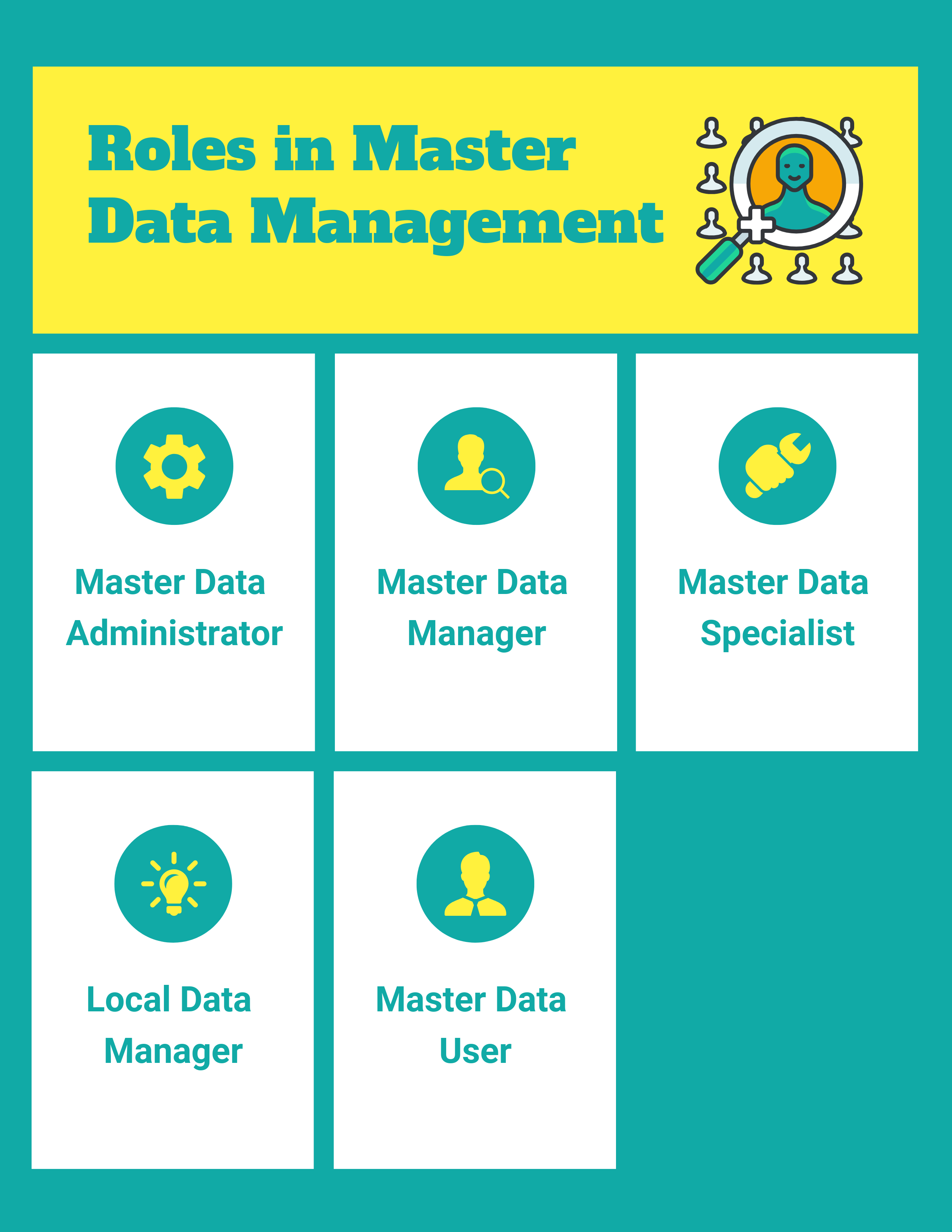
What are the Roles in Master Data Management
What are the biggest problems in Master Data Management? The biggest problems in Master Data Management include high integration & maintenance costs, the sheer data volume, inaccuracies and redundancies , the effort to provide all the required, information per master data, insufficient analytics and unreliable reports and many more. What is Master Data Management Solution? Master Data Management enables the sharing of harmonized master data, formerly trapped as independent master data in multiple systems, and ensures cross system data consistency regardless of physical system location. It facilitates the alignment of master data by providing services that recognize identical master data objects, and subsequently keeping them consistent across the IT environment.

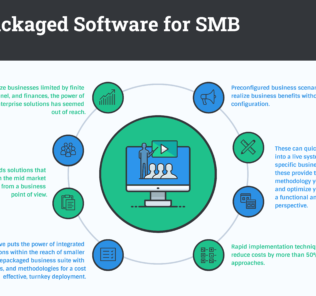
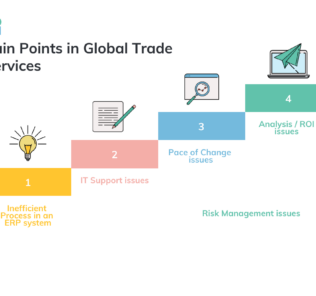
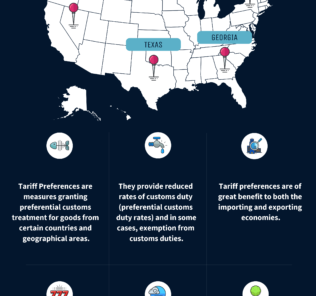

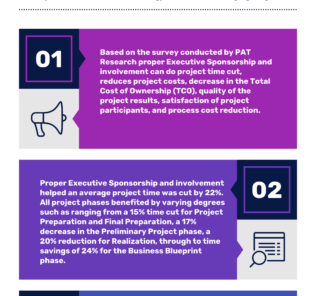
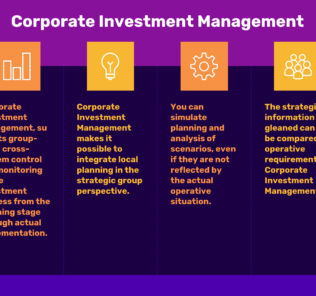




By clicking Sign In with Social Media, you agree to let PAT RESEARCH store, use and/or disclose your Social Media profile and email address in accordance with the PAT RESEARCH Privacy Policy and agree to the Terms of Use.